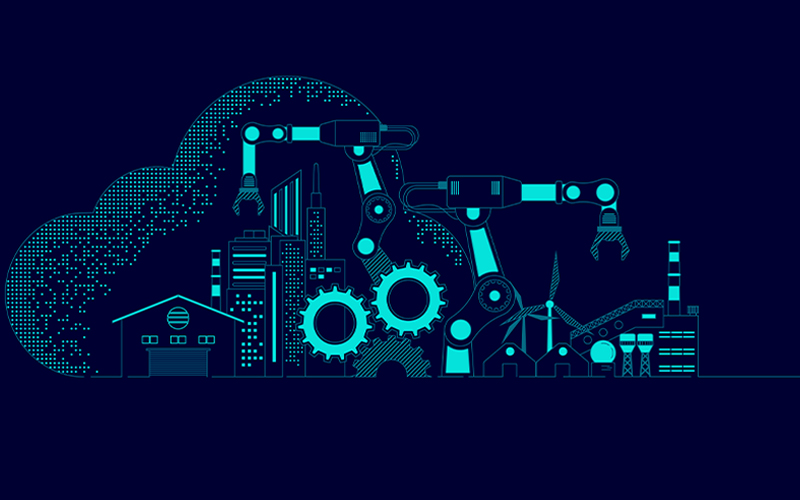Business Transformation
Unified Credit-Risk Models in the Post-Pandemic World
Statistical predictive models are fast becoming a trump card empowering banks to make better financial decisions. The superior outcomes generated by AI and ML-based algorithms facilitate better and more precise comparisons of the different performance metrics across various business lines. Many global banks are now heavily invested in these technologies to understand and improve their traditional credit risk models and thus safeguard their revenue growth.
Loans and advances on non-performing loans are key factors in determining a bank's asset quality. For example, the repayment ratio of gross loan portfolios that may be overdue for more than 90 DPD, could have a direct impact on revenues, profitability, and day-to-day operations of a bank. Transparency of decision models is essential to catch discrepancies here and combat intentional fraud, as well as other financial risks. The critical insights from these models are key in formulating strategies that can potentially improve a bank’s asset performance and future lending plans.
As it is, with an increase in credit distribution due to the pandemic, there has been a sharp incline in the risk associated with credit profiles of borrowers, and banks are now focusing on more sophisticated credit risk management strategies to tackle the complexity. Banks employ several tools and techniques for credit risk mitigation, including, and not limited to, complying with credit approving authorities, risk rating, risk pricing, portfolio management, and loan review mechanism, among others. But the volume and frequency of credit risks in today’s digital-first times, necessitate banks to instate risk management strategies that can forecast loss reserves to allocate from their loan defaulters to maintain business as usual and avoid bankruptcy.
An Integrated Risk Architecture
While mitigating risks in today’s dynamic business world, it is necessary to prevent, detect, and respond to credit disparities that can adversely increase risk exposure, in a timely and agile manner. Creating safeguards and integrating security is equally important. Banks may fall prey to frequent customer delinquencies in the absence of stringent security controls in the automated processes.
AI and ML-based credit scorecard models help banks analyze customer behaviours more precisely, create risk segments categorically, and initiate a faster response to variations in the business environment. The performance of the model becomes more impactful when they are deployed in alignment with the specifications of a bank’s internal processes. Such interdependence of processes and compliance ensures effective checks and balances even in an automated universe.
Many banks, however, struggle to discern the non-performing assets in their portfolios despite the use of advanced credit models. Typically, in-house teams in banks collect data from different sources through database designing, extracting, data transformation, and populating the same into respective data tables or data marts.
In the practical sense, however, a more detailed approach is required. Incorporation of KPI factors would help to better examine the impact on credit decision models, for example. Unfortunately, most banks still use traditional, outdated, and inflexible data collection strategies that can hinder the desired outcome of collecting and reading datasets.
Risk teams must rather focus on fortifying their credit risk models against multiple sources of risk scenarios including operational, credit, transactional, market, and liquidity.
Based on historical data, such as customer demographics, bank transactions, products, and services, subjective credit risk decision models can be constructed, but they may not be precise enough to determine robust credit risk models. Although internal credit risk assessment is dominant in banks today, the role of external or macro-economic data holds a whole lot of significance as well. The accuracy of the models can be improved by integrating macro-economic factors in the system, such as contingent risks like floods, productivity factors varying with different sectors, energy prices, emission indices, purchase or e-commerce data, policy changes, or any other significant data source.
Gaining Momentum
No decision can be branded a success or a failure without measuring its impact. Following the implementation of a new credit decision model, it is important to analyse the gathered data for its impact on risk, collections, and recoveries. Some of the operational indicators of success can be a reduction of credit losses and cash flow in hand, and a reduction in delinquencies due to the availability of real-time risk profiles of customers.
By managing potential risk volumes, call centres and back-end operations are made more efficient, resulting in reduced operating costs and improved workforce management. Administration of such contemporary credit decision models is also winning clients over, what with their ability to adapt to changing customer behaviours.
These models aid in boosting revenues on the back of improved customer experience, lower operation costs, and higher risk classification rates. They can also minimize potential credit losses by predicting the borrower's default probability more accurately than before. The accuracy of these models has a direct bearing on the loss reserve that banks hold for each risk profile. Enhancing efficiency in operations by combining relevant data points from internal and external data sources and safeguarding against most potential risks is within reach of the banks. It is just a matter of adapting, and adapting fast.






